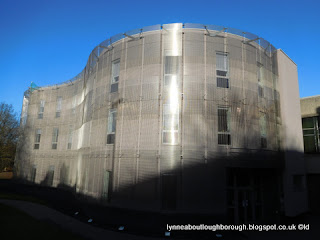Following
on from last week’s blog post, in which we delved into the history of
Loughborough in the years ending with an 8, we shall continue with our journey.
We got
to 918 when Britain regained control of its country from the Danes. Here's a bit more!
The year is: 1068
William
I (aka The Conqueror) was the King responsible for commissioning the Domesday
Book, which was the survey that listed all landholdings in England, along with
the name of their current holder. Loughborough has an entry in this book – total
population at the time 39 households, which in relation to other settlements
appearing in the Domesday survey was a very large population.
It was
in 1068 (or maybe 1069, depending on which sources you consult) that William I
marched northwards from Westminster, through Warwick, Leicestershire, Nottingham
and into Yorkshire, building castles along the way. His mission was to put down
rebellions and it is said the area surrounding Loughborough suffered greatly
during his march.
The year is: 1228
The Old
Rectory in Loughborough, tucked away on Rectory Place, next to the new development
of houses on Steeple Row, may well have been in existence before 1228, but it
is from 1228 that the first written evidence is found, when the Old Rectory was
acquired from the Cortlinstoke family by the church. There’s a full history of the
Old Rectory over on the Old Rectory and Loughborough Archaeological and Historical
Society blog.
The year is: 1238
When
Ranulf de Blondeville, 6th Earl of Chester, 1st Earl of
Lincoln, and Lord of the Manor of Loughborough died in 1232, the lordship of
Loughborough passed to the Despenser family. Sadly, the first title holder, Hugh,
who appears to have been popular with his monarch, King Henry III, died,
despite being under the care of one of Henry’s physicians. Hugh was succeeded by
his son, also called Hugh.
Not
entirely sure what happened in the intervening 300 years but –
The year is: 1538
This is
the year that sees the beginning of the keeping of the Parish Records – a book
in which all births, marriages and deaths are recorded, the book being kept in
the Parish Chest.
The year is: 1558
Queen
Mary I had made Sir Edward Hastings, 2nd Earl of Huntingdon, a Knight
of the Garter, and in 1558 she granted him the title Baron Loughborough, as a
reward for his bravery and loyalty. It is believed that Sir Edward was the
first of the Lords of the Manor to live in the Manor House.
Later in
1558, Queen Elizabeth 1 acceded to the throne.
Tragically,
also in 1558, there was a protracted outbreak of the plague, which lasted
intermittently for 100 years, and killed nearly 300 people in the space of
18-months. There's a bit more about the later plagues on my blog.
The year is: 1578
It was
in 1578 that repairs were made to the whipping post, and the stocks. The
whipping post was a wooden post to which the person to be punished was tied, in
order to be whipped. The stocks were a wooden frame with holes cut out for the
person being punished to put their hands and head through, where they stayed
for a couple of hours whilst people threw all sorts of things at them.
Where
exactly these instruments of punishment were in 1578, I don’t, know, but from
1688 both the whipping post and the stocks were near The Shambles, on the
corner of Market Place and Market Street, where the phone shop is now, that was
once Potters Toy Shop and Clemerson’s department store. The Shambles was the
area beneath the court leet - a meeting place for local government – and was where
butchers slaughtered animals.
More information on medieval punishment can be found at:
and
You are welcome to quote passages from any of my posts, with appropriate credit. The correct citation for this looks as follow:
Dyer, Lynne (2018). Anniversaries 1068 to 1578. Available from: https://lynneaboutloughborough.blogspot.com/2018/01/anniversaries-1068-to-1578.html [Accessed 28 January 2018]
Take down policy:
I post no pictures that are not my own, unless I have express permission so to do. All text is my own, and not copied from any other information sources, printed or electronic, unless identified and credited as such. If you find I have posted something in contravention of these statements, or if there are photographs of you which you would prefer not to be here, please contact me at the address listed on the About Me page, and I will remove these.
Thank you for reading this blog.
Lynne

































